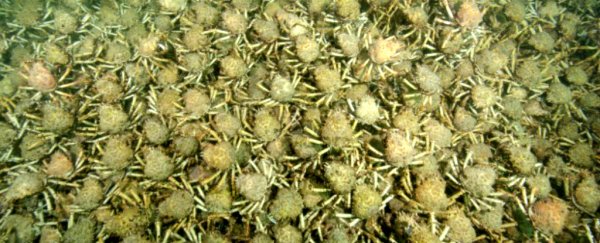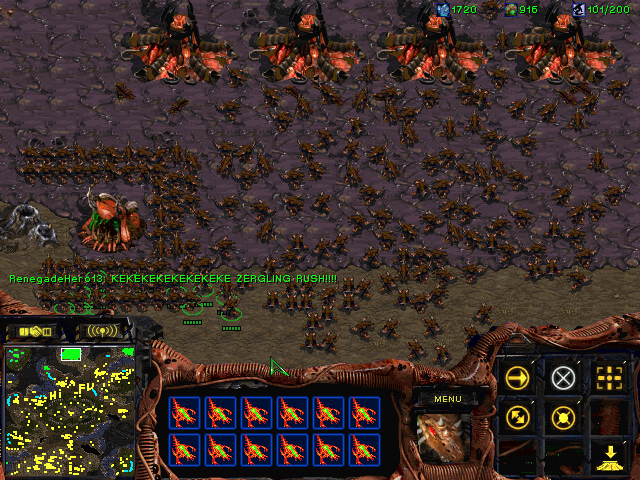
Every year, a cast of hundreds of thousands of giant spider crabs (yes, that's the official name for a group of crabs) descends upon Port Phillip Bay in Australia to shed their old exoskeletons. And, this year, a couple of marine biologists have been… lucky(??) enough to capture the congregation on film. Sweet baby jeebus, that's a whole lot of crabs.
As you can see in the footage above, the crabs form what can best be described as a writhing horde of crustaceans plucked straight from my worst nightmares, as individuals crawl over each other up to 10 crabs deep in the shallows of the bay just off the coast of Melbourne.
If that's not unsettling enough for you, keep in mind that each of these giant spider crabs have claws that grow more than 70 cm (2.2 feet) in length and a body that's almost 17 cm (0.5 feet) wide, and their little annual gatherings can stretch for hundreds of metres. Just imagine the sound of all those claws on claws…
The footage was filmed by aquatic scientists Sheree Marris and Jamie Seymour, and Marris said it was one of the biggest congregations of the crabs she'd seen in her 20 years of diving.
"I swam in a straight line for 4.5 minutes and the crabs were thick on the sandy shallows. It was gobsmackingly amazing," she told ABC News. "[In previous years] I've swam maybe a minute-and-a-half to two minutes and [this year] I wasn't going slow … It's pretty awesome."
So why so many crabs in one spot? The gathering is thought to be part of the crabs' annual moulting routine - allowing them to find safety in numbers while they shed their exoskeletons and wait for their new shell to harden.
They need to get rid of their old exoskeleton each year so they can grow, but while they're waiting for their new armour to harden up, they're incredibly vulnerable to rays and sharks, explains Marris. But, by gathering together in the shallows en masse, they can reduce their risk of being eaten - hence the horde.
The Nature of Science YouTube page, which shared Marris and Seymour's footage, explains the moulting process, which you can see occur at the end of the video above:
"They secrete a special enzyme that separates the old shell from the underlying skin, while a new soft paper-like shell is secreted beneath the old one. The crabs then start absorbing seawater and swell, causing the old shell to come apart. The … shell then simply opens up like a lid and the crab extracts itself."
Fascinatingly, once one crab starts to moult in the group, it kicks off a chain reaction, and the rest of the group all start to shed pretty much simultaneously, so they're all equally vulnerable at the same time.
In terms of deciding who goes on top, Marris explains that it's every crab for itself. "There's no hierarchy. It's just this orange chaos of legs and claws. It's a moving blanket of legs and claws really, it's pretty awesome," she said.
"At times they kind of just stack on top of each other and the maximum I've seen is 10. But that's how deep it can actually get, which makes sense because if you're on the top, you're going to be more vulnerable, especially if they've just freshly moulted."
Just think about that for a second. If you're a crab going through a growth spurt, then the safest place for you is at the bottom of a huge mass of all your claw-wielding friends. Yeah… nope. We'll take a zerg rush over a crab rush any day.

